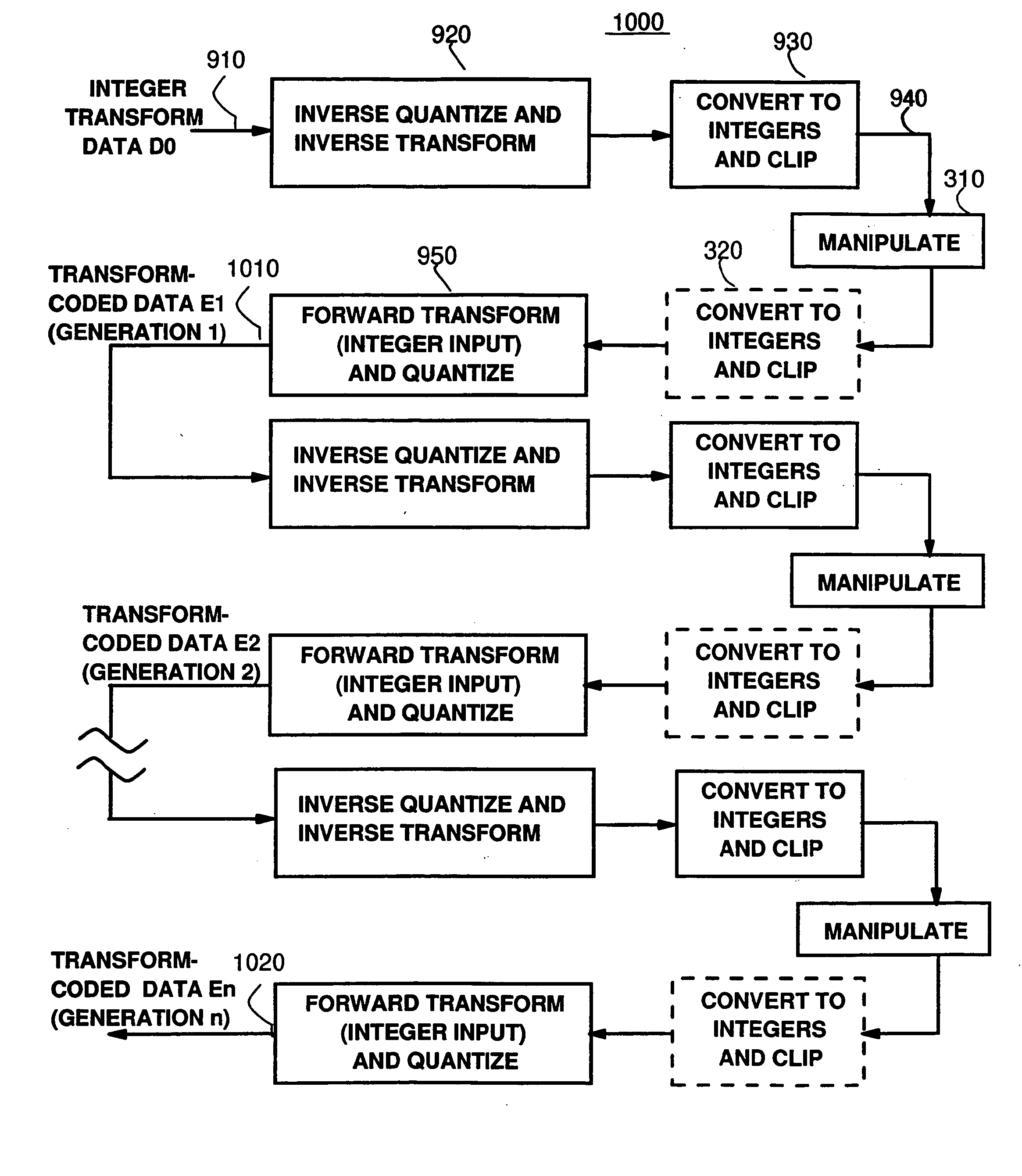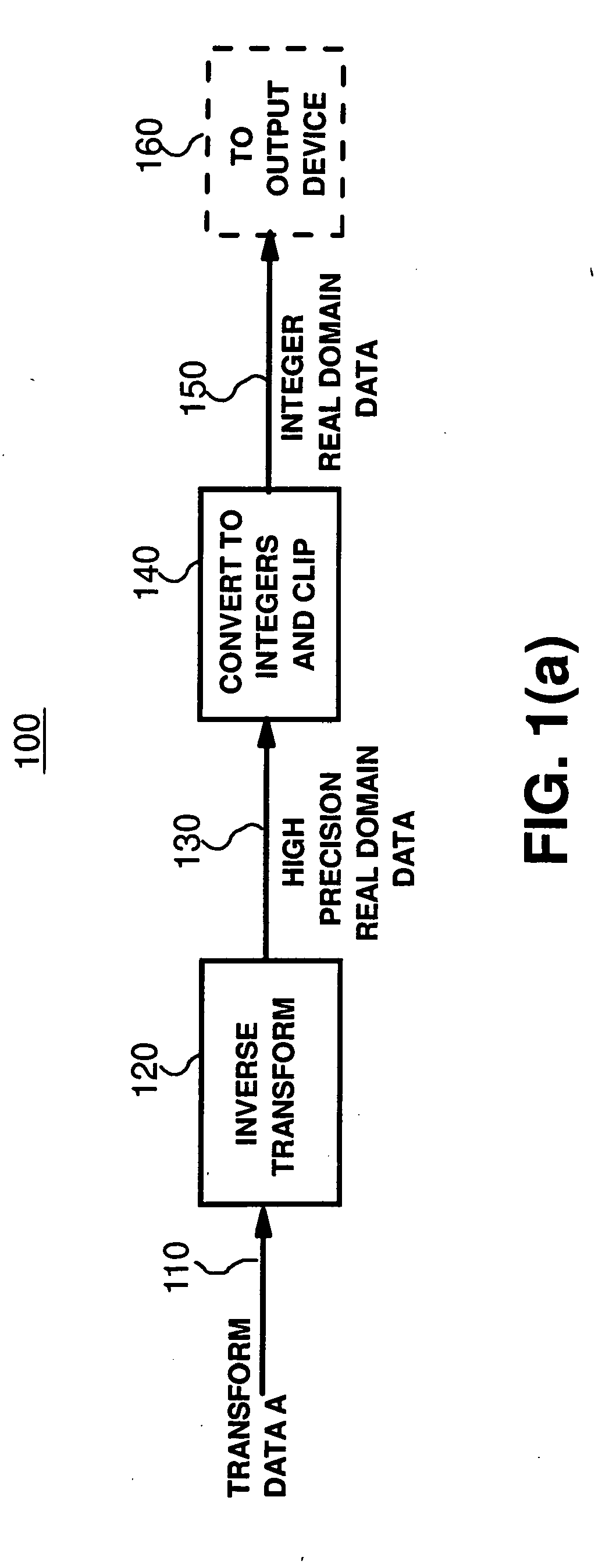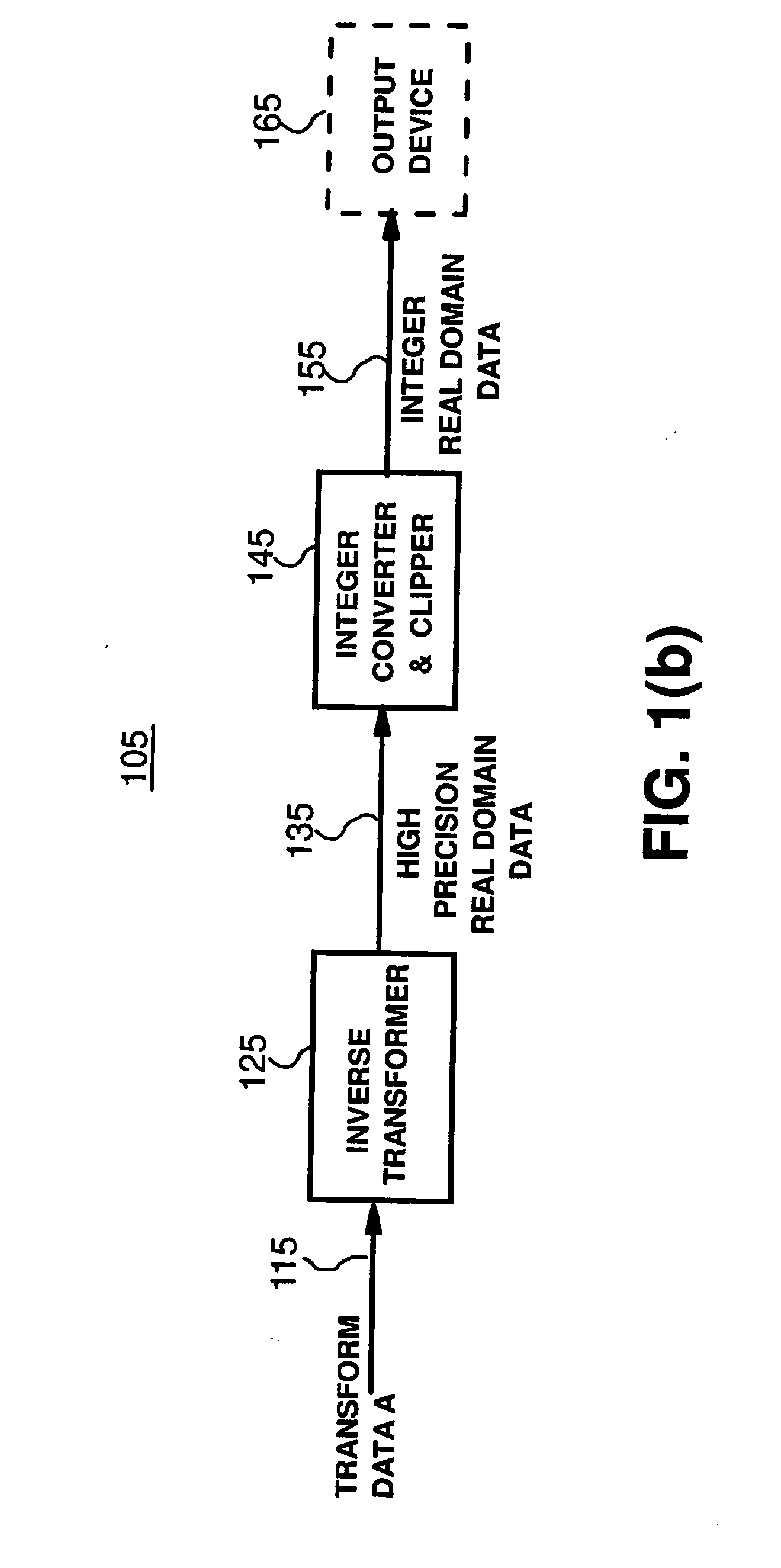Reduced Error Processing of Transformed digital Data
a technology of transformed digital data and reduced error, which is applied in the field of transform coding of digital data, can solve the problems of inaccuracy of decoded data and introduce larger errors into real-domain integers, so as to reduce data undesired errors, and reduce errors
- Summary
- Abstract
- Description
- Claims
- Application Information
AI Technical Summary
Benefits of technology
Problems solved by technology
Method used
Image
Examples
Embodiment Construction
[0086] An example embodiment of a method for processing transform data with reduced error 1100 is illustrated in FIG. 11(a). Transform data ‘A’110 are passed through an inverse transform 120 to produce high-precision real-domain data 130, as in FIG. 1(a). If it is necessary to pass the real-domain data to an output device 160 which takes integer-valued input, or to generate integer-valued data before manipulation for any other reason, the steps of converting to integers and clipping to an allowed range 140 is done before manipulation without affecting the high-precision real-domain data. The desired manipulation 1110 of the real-domain data is performed using a method which accepts high-precision data as input and produces high-precision data 1120 as output. This manipulation method 1110 performs conceptually the same processing on the data as the manipulation on integers 310 described above in FIG. 3, but operates instead on high-precision data. If it is necessary to pass the manip...
PUM
 Login to View More
Login to View More Abstract
Description
Claims
Application Information
 Login to View More
Login to View More - R&D
- Intellectual Property
- Life Sciences
- Materials
- Tech Scout
- Unparalleled Data Quality
- Higher Quality Content
- 60% Fewer Hallucinations
Browse by: Latest US Patents, China's latest patents, Technical Efficacy Thesaurus, Application Domain, Technology Topic, Popular Technical Reports.
© 2025 PatSnap. All rights reserved.Legal|Privacy policy|Modern Slavery Act Transparency Statement|Sitemap|About US| Contact US: help@patsnap.com



